1. International Diabetes Federation. IDF Diabetes Atlas. 5th ed. Brussels: International Diabetes Federation;2011.
2. Soltèsz G, Patterson C, Dahlquist G. Global trends in childhood type 1 diabetes. International Diabetes Federation. Diabetes Atlas. Brussels: International Diabetes Federation;2006. p. 153–190.
3. Kim EH, Kim YH. Left ventricular function in children and adolescents with type 1 diabetes mellitus. Korean Circ J. 2010; 40:125–130. PMID:
20339497.
4. Suys BE, Katier N, Rooman RP, Matthys D, Op De Beeck L, Du Caju MV, De Wolf D. Female children and adolescents with type 1 diabetes have more pronounced early echocardiographic signs of diabetic cardiomyopathy. Diabetes Care. 2004; 27:1947–1953. PMID:
15277422.
5. Rubler S, Dlugash J, Yuceoglu YZ, Kumral T, Branwood AW, Grishman A. New type of cardiomyopathy associated with diabetic glomerulosclerosis. Am J Cardiol. 1972; 30:595–602. PMID:
4263660.
6. Asghar O, Al-Sunni A, Khavandi K, Khavandi A, Withers S, Greenstein A, Heagerty AM, Malik RA. Diabetic cardiomyopathy. Clin Sci (Lond). 2009; 116:741–760. PMID:
19364331.
7. Fang ZY, Yuda S, Anderson V, Short L, Case C, Marwick TH. Echocardiographic detection of early diabetic myocardial disease. J Am Coll Cardiol. 2003; 41:611–617. PMID:
12598073.
8. Hamblin M, Smith HM, Hill MF. Dietary supplementation with vitamin E ameliorates cardiac failure in type I diabetic cardiomyopathy by suppressing myocardial generation of 8-iso-prostaglandin F2alpha and oxidized glutathione. J Card Fail. 2007; 13:884–892. PMID:
18068623.
9. Elshahed GS, Ahmed MI, El-Beblawy NS, Kamal HM, Ismaiel MF, Bin Zheidan OAS. Evaluation of right and left ventricular systolic and diastolic function in patients with type 1 diabetes using echocardiography and tissue Doppler imaging. Suez Canal Univ Med J. 2008; 11:65–74.
10. Rosner B, Cook N, Portman R, Daniels S, Falkner B. Determination of blood pressure percentiles in normal-weight children: some methodological issues. Am J Epidemiol. 2008; 167:653–666. PMID:
18230679.
11. Ghali I, Salah N, Hussien F, Erfan M, El-Ruby M, Mazen I, Sabry M, Abd El-Razik M, Saad M, Hossney S, Ismaail , Abd El-Dayem S. Egyptian growth curves for infants, children and adolescents. In : Satorio A, Buckler JMH, Marazzi N, editors. Crecerenelmondo. Milan: Ferring Publisher;2008.
12. Alemzadeh R, Ali O. Diabetes mellitus: type 1 diabetes mellitus (immunemediated). In : Kliegman RM, Stanton B, St. Geme J, Schor NF, Behrman RE, editors. Nelson textbook of pediatrics. 19th ed. Philadelphia: Elsevier;2011. p. 1969–1989.
13. American Diabetes Association. Standards of medical care in diabetes--2012. Diabetes Care. 2012; 35(Suppl 1):S11–S63. PMID:
22187469.
14. Kwiterovich PO Jr. Recognition and management of dyslipidemia in children and adolescents. J Clin Endocrinol Metab. 2008; 93:4200–4209. PMID:
18697860.
15. Nagueh SF, Appleton CP, Gillebert TC, Marino PN, Oh JK, Smiseth OA, Waggoner AD, Flachskampf FA, Pellikka PA, Evangelisa A. Recommendations for the evaluation of left ventricular diastolic function by echocardiography. Eur J Echocardiogr. 2009; 10:165–193.
16. Rudski LG, Lai WW, Afilalo J, Hua L, Handschumacher MD, Chandrasekaran K, Solomon SD, Louie EK, Schiller NB. Guidelines for the echocardiographic assessment of the right heart in adults: a report from the American Society of Echocardiography endorsed by the European Association of Echocardiography, a registered branch of the European Society of Cardiology, and the Canadian Society of Echocardiography. J Am Soc Echocardiogr. 2010; 23:685–713. quiz 786-8. PMID:
20620859.
17. Voulgari C, Papadogiannis D, Tentolouris N. Diabetic cardiomyopathy: from the pathophysiology of the cardiac myocytes to current diagnosis and management strategies. Vasc Health Risk Manag. 2010; 6:883–903. PMID:
21057575.
18. Zile MR, Brutsaert DL. New concepts in diastolic dysfunction and diastolic heart failure: part I: diagnosis, prognosis, and measurements of diastolic function. Circulation. 2002; 105:1387–1393. PMID:
11901053.
19. Yu CM, Sanderson JE, Marwick TH, Oh JK. Tissue Doppler imaging a new prognosticator for cardiovascular diseases. J Am Coll Cardiol. 2007; 49:1903–1914. PMID:
17498573.
20. Fang ZY, Leano R, Marwick TH. Relationship between longitudinal and radial contractility in subclinical diabetic heart disease. Clin Sci (Lond). 2004; 106:53–60. PMID:
12924982.
21. Khattab AA, Soliman MA. Biventricular function and glycemic load in type 1 diabetic children: Doppler tissue-imaging study. Pediatr Cardiol. 2015; 36:423–431. PMID:
25304244.
22. Gökşen D, Levent E, Kar S, Ozen S, Darcan S. Serum adiponectin and hsCRP levels and non-invasive radiological methods in the early diagnosis of cardiovascular system complications in children and adolescents with type 1 diabetes mellitus. J Clin Res Pediatr Endocrinol. 2013; 5:174–181. PMID:
24072086.
23. Çiftel M, Ertuğ H, Parlak M, Akçurin G, Kardelen F. Investigation of endothelial dysfunction and arterial stiffness in children with type 1 diabetes mellitus and the association with diastolic dysfunction. Diab Vasc Dis Res. 2014; 11:19–25. PMID:
24169808.
24. Sveen KA, Nerdrum T, Hanssen KF, Brekke M, Torjesen PA, Strauch CM, Sell DR, Monnier VM, Dahl-Jørgensen K, Steine K. Impaired left ventricular function and myocardial blood flow reserve in patients with long-term type 1 diabetes and no significant coronary artery disease: associations with protein glycation. Diab Vasc Dis Res. 2014; 11:84–91. PMID:
24443481.
25. Miki T, Yuda S, Kouzu H, Miura T. Diabetic cardiomyopathy: pathophysiology and clinical features. Heart Fail Rev. 2013; 18:149–166. PMID:
22453289.
26. Gul K, Celebi AS, Kacmaz F, Ozcan OC, Ustun I, Berker D, Aydin Y, Delibasi T, Guler S, Barazi AO. Tissue Doppler imaging must be performed to detect early left ventricular dysfunction in patients with type 1 diabetes mellitus. Eur J Echocardiogr. 2009; 10:841–846. PMID:
19541667.
27. Hegazy SK, Tolba OA, Mostafa TM, Eid MA, El-Afify DR. Alphalipoic acid improves subclinical left ventricular dysfunction in asymptomatic patients with type 1 diabetes. Rev Diabet Stud. 2013; 10:58–67. PMID:
24172699.
28. Dragulescu A, Mertens L, Friedberg MK. Interpretation of left ventricular diastolic dysfunction in children with cardiomyopathy by echocardiography: problems and limitations. Circ Cardiovasc Imaging. 2013; 6:254–261. PMID:
23343514.
29. Cosson S, Kevorkian JP. Left ventricular diastolic dysfunction: an early sign of diabetic cardiomyopathy? Diabetes Metab. 2003; 29:455–466. PMID:
14631322.
30. Devereux RB, Roman MJ, Paranicas M, O'Grady MJ, Lee ET, Welty TK, Fabsitz RR, Robbins D, Rhoades ER, Howard BV. Impact of diabetes on cardiac structure and function: the strong heart study. Circulation. 2000; 101:2271–2276. PMID:
10811594.
31. Nagueh SF, Smiseth OA, Appleton CP, Byrd BF 3rd, Dokainish H, Edvardsen T, Flachskampf FA, Gillebert TC, Klein AL, Lancellotti P, Marino P, Oh JK, Alexandru Popescu B, Waggoner AD. Houston, Texas. Oslo, Norway. Phoenix, Arizona. Nashville, Tennessee. Hamilton, Ontario, Canada. Uppsala, Sweden. Ghent and Liège, Belgium. Cleveland, Ohio. Novara, Italy. Rochester, Minnesota. Bucharest, Romania. St. Louis, Missouri. Recommendations for the evaluation of left ventricular diastolic function by echocardiography: an update from the American Society of Echocardiography and the European Association of Cardiovascular Imaging. Eur Heart J Cardiovasc Imaging. 2016; 17:1321–1360. PMID:
27422899.
32. Hong YM. Atherosclerotic cardiovascular disease beginning in childhood. Korean Circ J. 2010; 40:1–9. PMID:
20111646.
33. Marcovecchio ML, Dalton RN, Prevost AT, Acerini CL, Barrett TG, Cooper JD, Edge J, Neil A, Shield J, Widmer B, Todd JA, Dunger DB. Prevalence of abnormal lipid profiles and the relationship with the development of microalbuminuria in adolescents with type 1 diabetes. Diabetes Care. 2009; 32:658–663. PMID:
19171721.
34. Vitarelli A, Martino F, Capotosto L, Martino E, Colantoni C, Ashurov R, Ricci S, Conde Y, Maramao F, Vitarelli M, De Chiara S, Zanoni C. Early myocardial deformation changes in hypercholesterolemic and obese children and adolescents: a 2D and 3D speckle tracking echocardiography study. Medicine (Baltimore). 2014; 93:e71. PMID:
25211047.
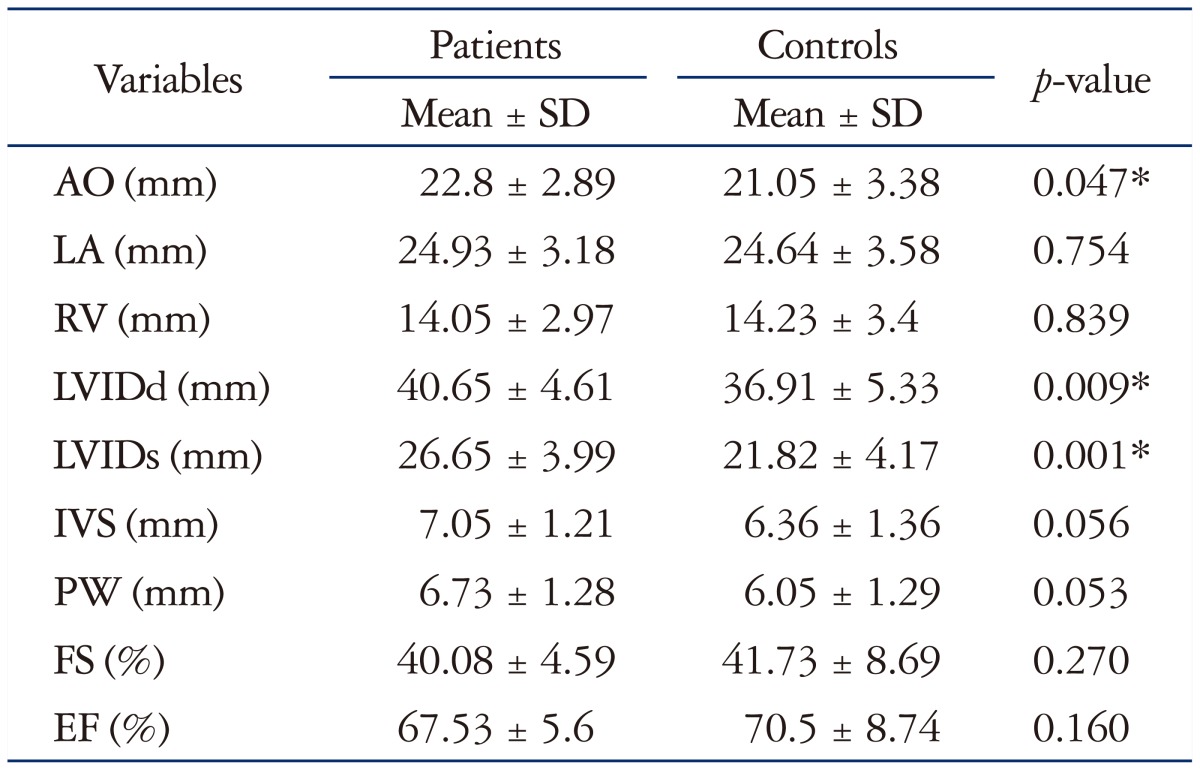
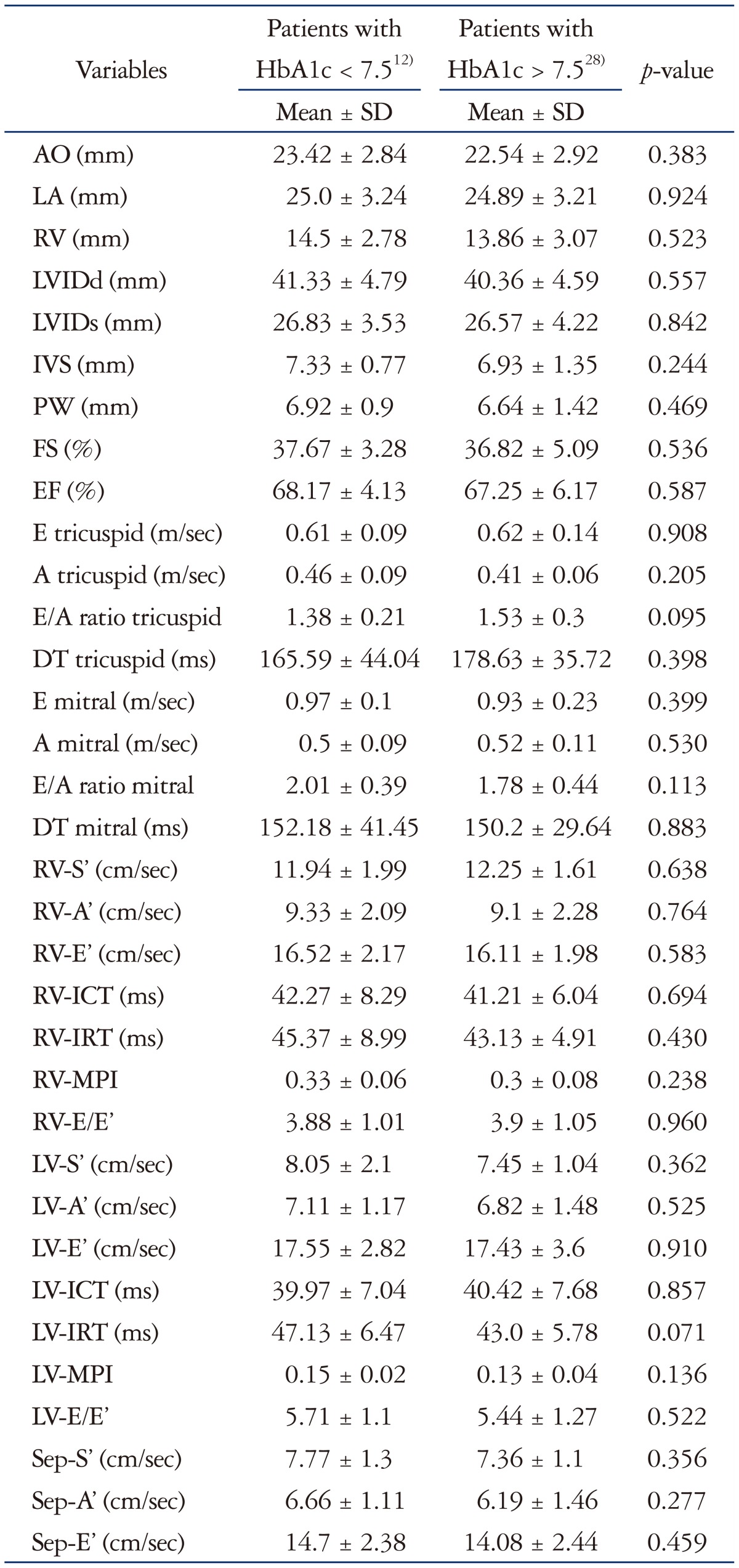
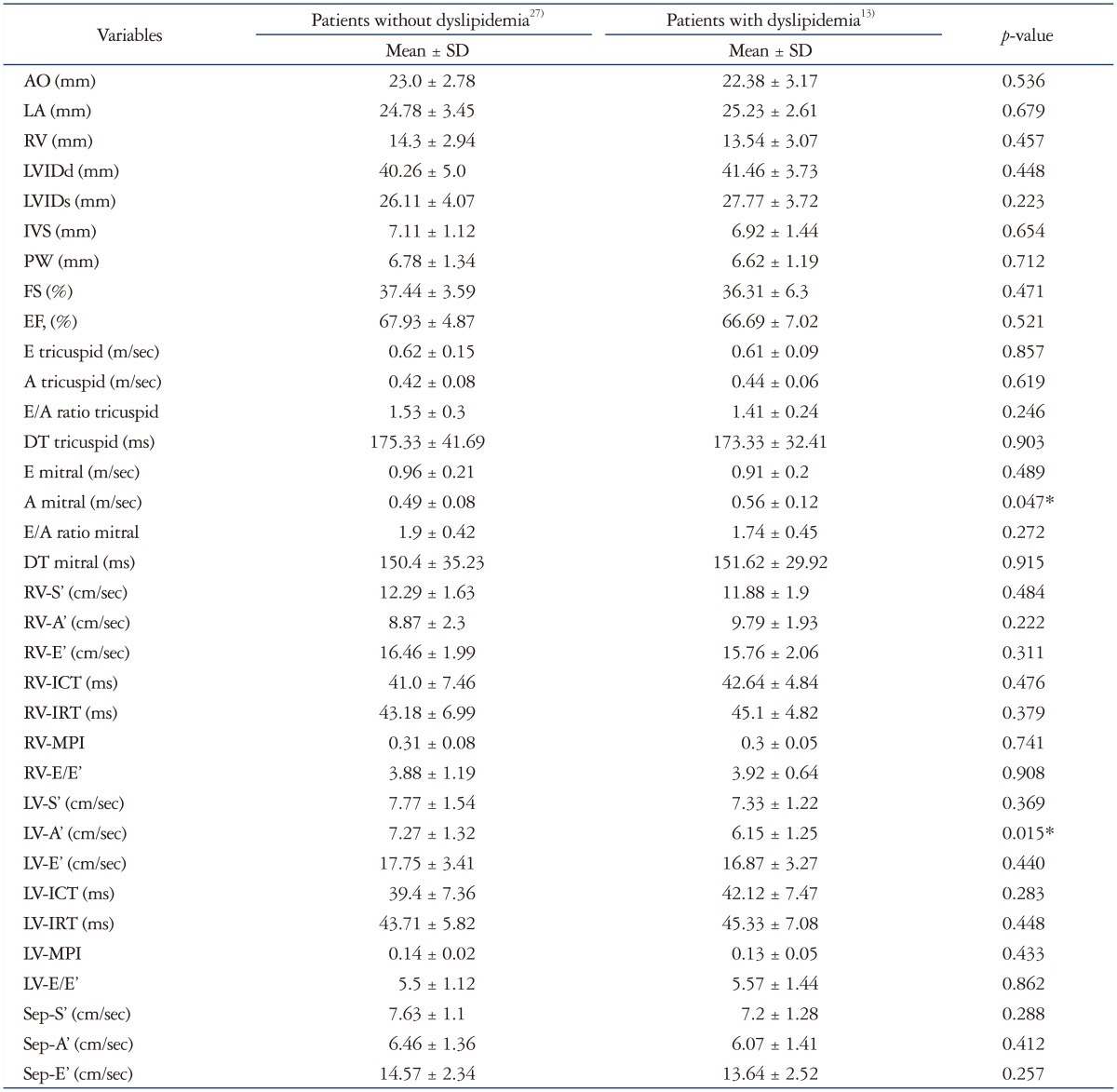




 PDF
PDF ePub
ePub Citation
Citation Print
Print


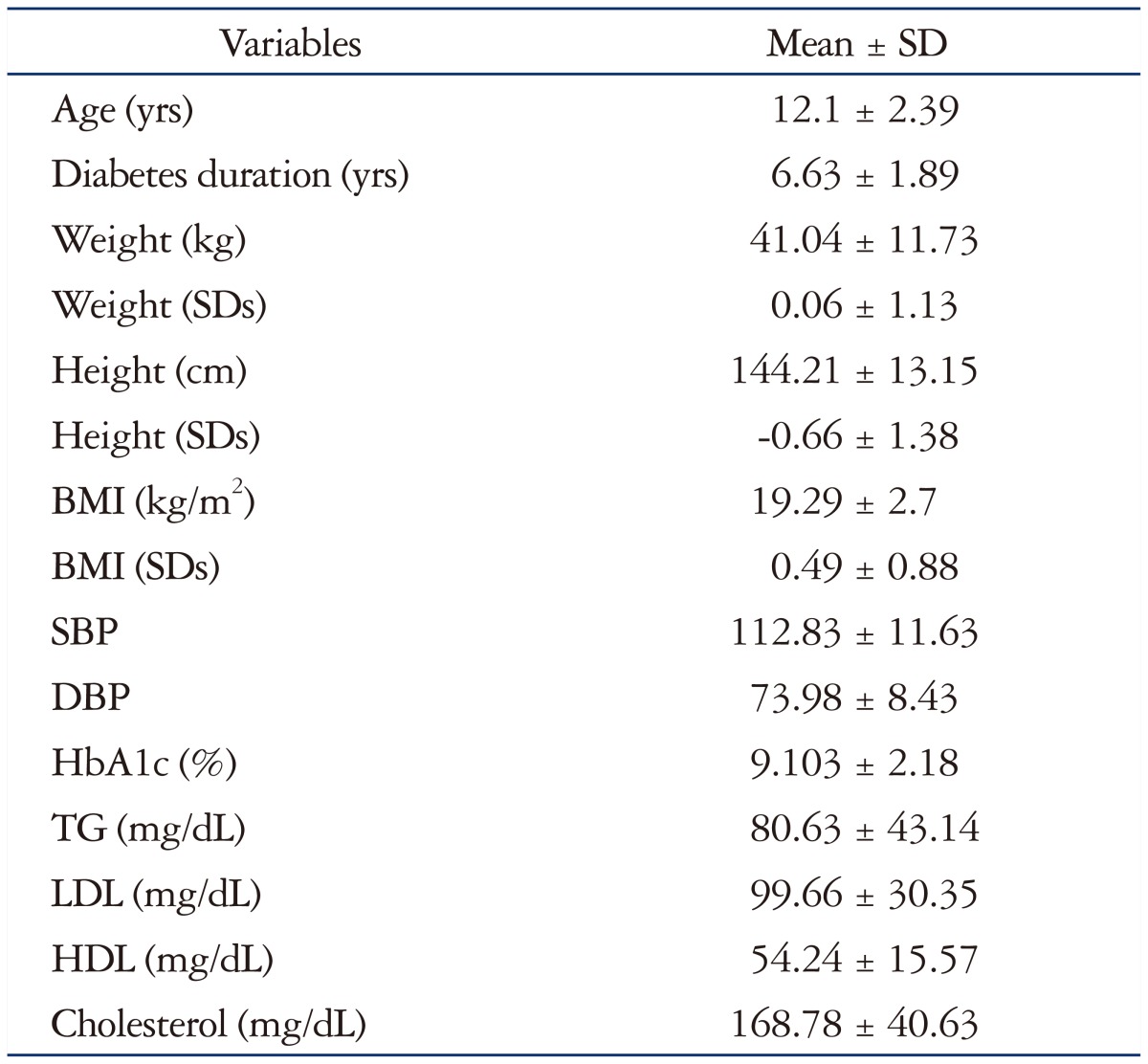
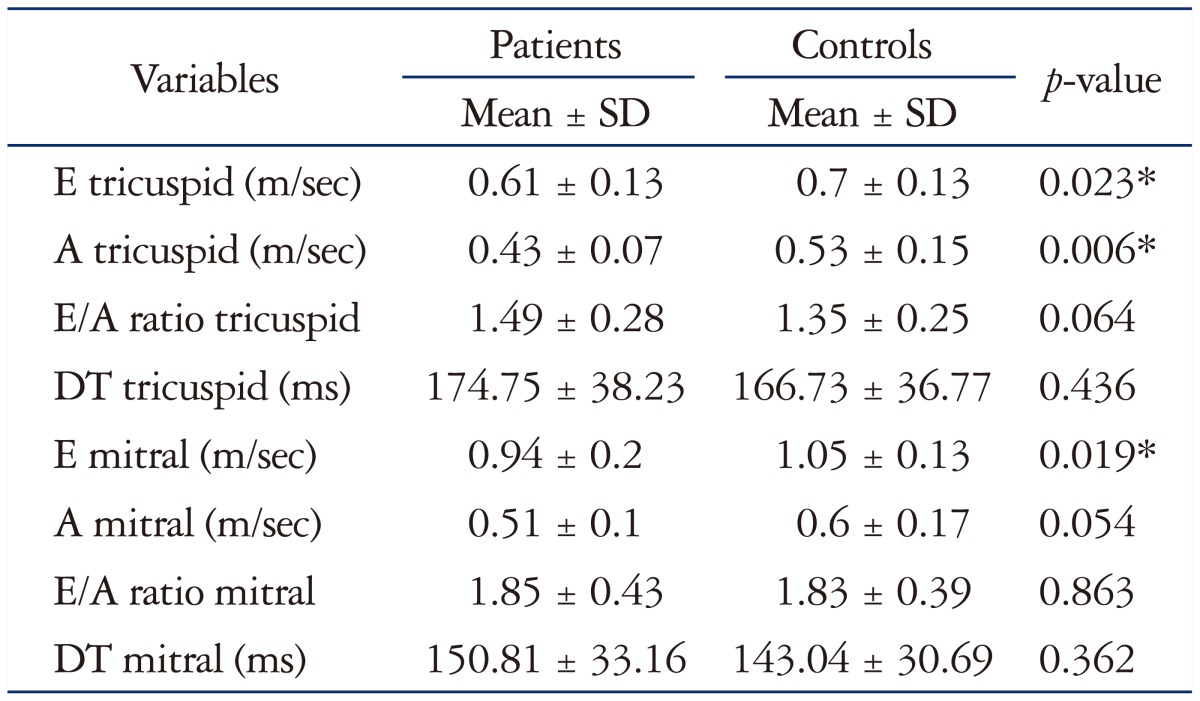
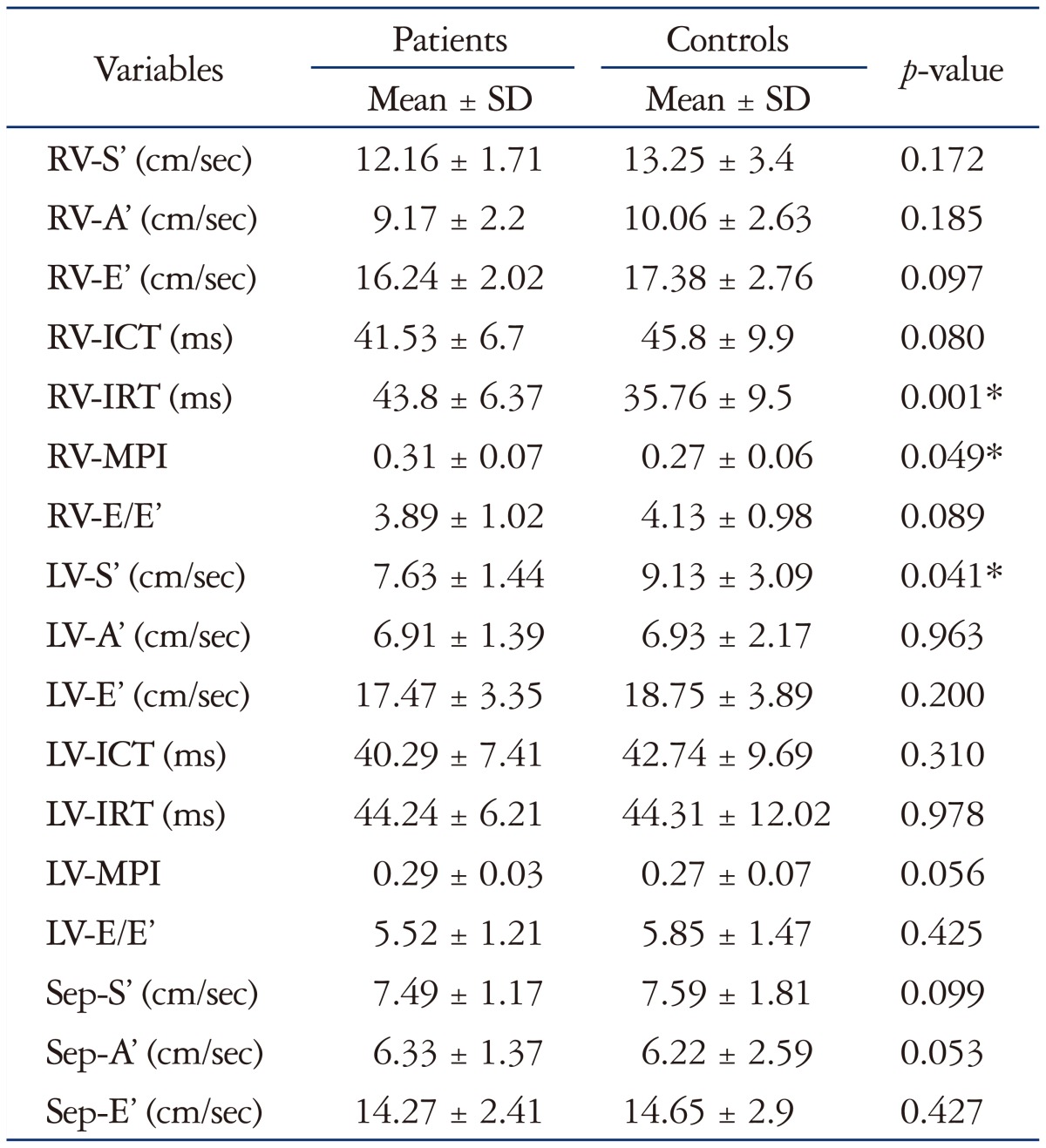
 XML Download
XML Download